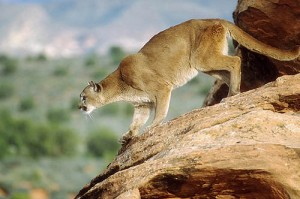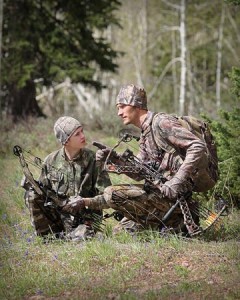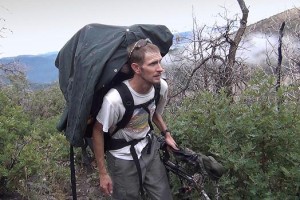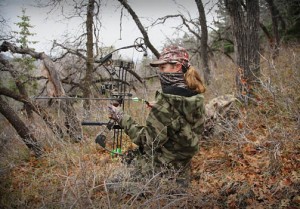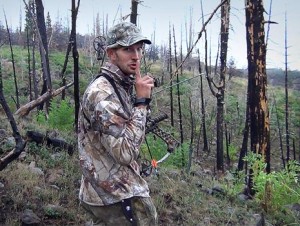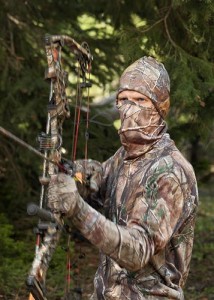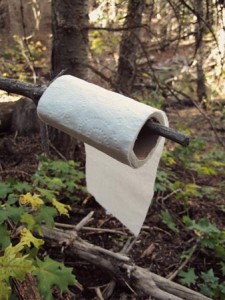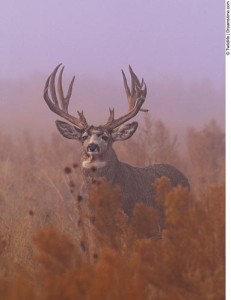Hunt Like a Cougar
Who is the greatest mule deer hunter in the world? That’s right, it’s Mr. Cougar (aka mountain lion). Out West an adult cougar kills a mule deer every 10-14 days. That’s 30 deer per year!
The average western hunter is lucky to kill just one mule deer in a year. At this rate how can anyone expect to improve their skills, especially when hunting with primitive weapons? Perhaps we can learn a few things from our feline friends.
Cougars are actually similar to humans in many ways. For instance, we’re both predators and meat-eaters with forward-placed eyes designed to catch fast motion. We’re similar in size and even color: a cougar is tan/orange just like a human before we don some fancy camo pattern. And just like cougars, we love to hunt mule deer!
A few years ago I started comparing my own hunting style with that of a cougar. I found this to be a surprisingly helpful way to improve my hunting skills and make better decisions afield.
How to Hunt Like a Cougar
Below are several traits that make a cougar such an efficient mule deer hunter, and how we can learn from them:
• Cougars stalk very close: Killing is done eye to eye, paw to hoof. Survival means stalking very close while remaining completely undetected. Deer can’t see super-slow motion or fine detail, and the cougar capitalizes on those weaknesses. Stalks can last several hours, and even then, most stalks end in failure. But the cougar persists and eventually eats. The two greatest virtues a hunter can glean from cougars are patience and persistence.
• Cougars are light on their feet: Have you ever seen an obese cougar? Heck no. Mature males typically weigh 125 to 220 pounds, and they only eat as much food as necessary to survive. Cougars also eat 100% organic, lean meat and avoid processed food and carbs. Instinctually, cougars know that over-eating will slow them down and make them inefficient killers. What can we learn? It’s pretty obvious: stay trim and fit.
• Cougars hunt alone: Cougars rarely hang out in packs, and when they do it’s usually a young family or juvenile group. Adult cougars live and hunt on their own. There’s no reason in the world to hunt in a group. Hunting in a group increases visibility, doubles their scent, and slows them down. A cougar doesn’t get home sick or lonely either, which makes him mentally tough and distraction-free. For all these reasons, bowhunters can benefit greatly by hunting alone too.
• Cougars cover lots of ground: A cougar’s home range is anywhere from 10 to 300 square miles, and he often travels hundreds of miles in search of game. He’s constantly mobile. If a cougar keeps hunting the same mountainside every day, he’ll eventually run out of food and starve. Human hunters might consider doing the same. If you aren’t finding deer in traditional areas, it might be time to move on. Being flexible enough to explore new areas (or new units) could be the ticket to success this season. More importantly is being physically able to cover lots of rugged country once you’re out there.
• Cougars don’t carry extra weight: Killing is done using powerful fangs and claws, not heavy, cumbersome weapons and a pack-load of gear. The cougar travels light, carrying only the basic necessities to live full-time in the wild. Sure, humans have different physical needs, but how different are we, really? We have a coat, the cougar has fur; we have a tent, he has a den; we have shoes, he has footpads, etc. Is a GPS, spotting scope, cell phone or a camera really necessary to kill one mule deer? As for weapons, there are a myriad of lightweight options available. Many bow manufacturers make compound bows weighing less than three pounds, and traditional bows weighing less than one pound!
• Cougars minimize scent: There’s no question that cats are clean animals, and the cougar is no exception. The cougar incorporates daily tongue baths and carefully buries his stinky treasures, all for the sake of reducing his presence afield. For humans, vigilant scent reduction techniques increases overall success by reducing your footprint in the woods. Of course 100% scent elimination is impossible, but there are a number of ways to reduce scent starting with using wind direction to carry scent away from deer. I’m a big proponent of using scent reduction tactics such as field baths and scent-killing sprays, soaps, deodorants, and detergents.
Conclusion
Down through the ages cougars have used their instincts and learned hunting skills to locate and kill more mule deer than any other animal on earth. This perfectly adapted predator doesn’t require fancy gadgetry, technology, apps, or upgrades to be successful. The next time you’re thinking about making changes to your hunting routine, ask yourself, “What would Mr. Cougar do?”
Final Note: If you get a chance, buy a tag and shoot a cougar. They are tasty, but more importantly we really don’t need the competition.
Happy Hunting!

